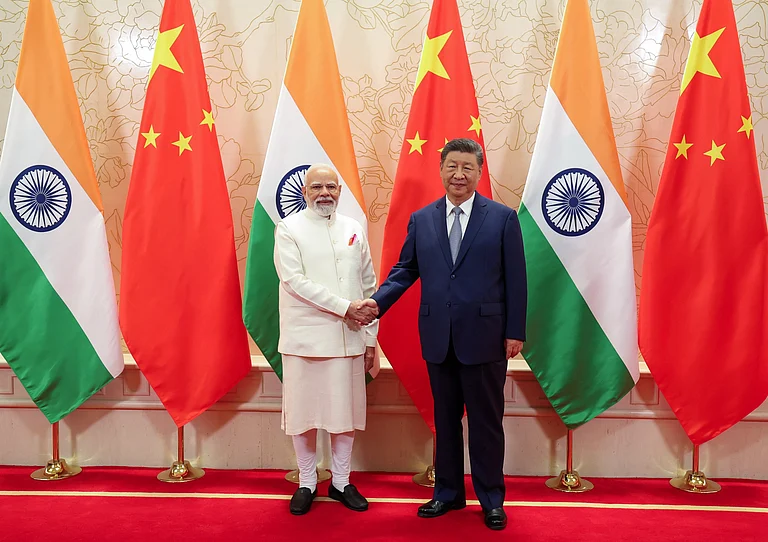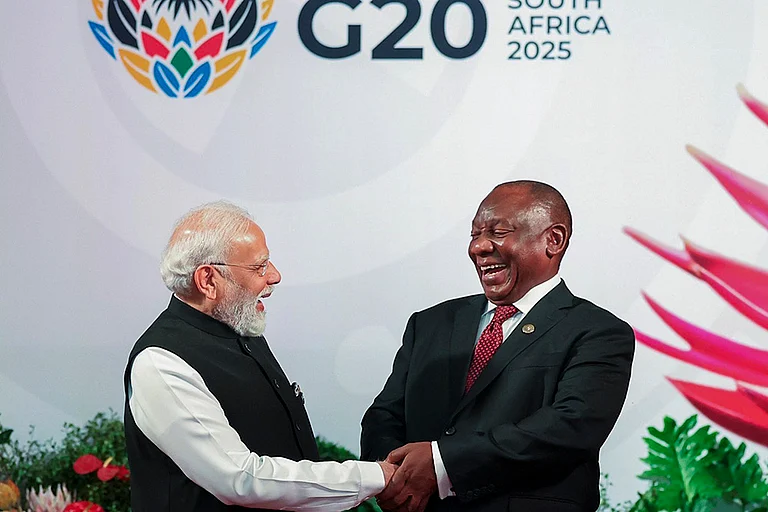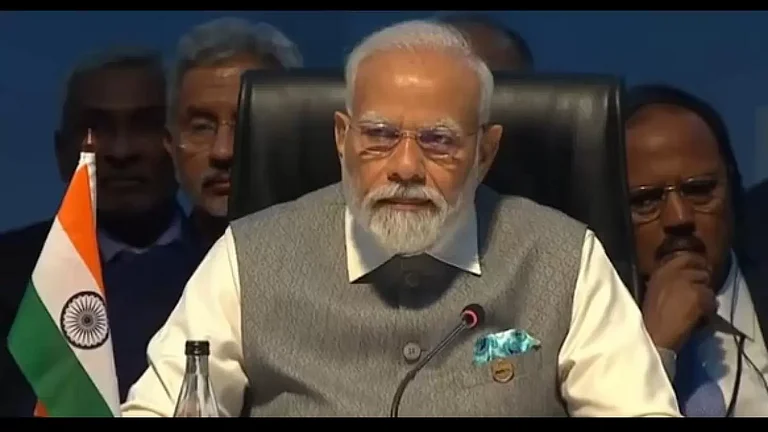As cultural institutions across the world confront legacies of colonialism, the idea of the Global South no longer exists as a mere geographical marker. An intellectual provocation, it is a call to reassess whose stories get told, by whom, and in what spaces. Museums, once seen as apolitical repositories of objects, are now active battlegrounds for questions of representation, restitution, and relevance.
Amid this global churn, the third edition of the Bihar Museum Biennale arrives in Patna with a clarity of purpose to create a platform where museums and cultural institutions from the Global South do not just participate, but lead the movement. Unlike most biennales that privilege artists or designers, the Bihar Museum Biennale is unique as it is the world’s first biennale dedicated solely to museums.
“It is the world’s first museum-focused biennale that represents a paradigmatic shift in contemporary museological practice. Unlike traditional art, design, and architecture biennales, it provides a dedicated platform specifically for museums to showcase their collections, methodologies, and institutional narratives,” says Additional Director of Bihar Museum, Ashok Sinha.
In its 2025 edition, it decisively aligns itself with institutions and imaginaries from Asia, Africa, and Latin America. Scheduled for August 2025 in Patna, the Biennale’s theme this year is ‘Global South: Sharing Histories’, signalling a deepening of its long-term vision. Rather than treat decolonisation as a buzzword, the Bihar Museum Biennale asks what happens when institutions from Asia, Africa, and Latin America speak to each other directly, unfettered by the frameworks and curatorial vocabularies of the West? How do shared histories of resistance, migration, and memory reshape the museum space? And perhaps, more importantly, what does it mean to build an intellectual common that centres and furthers South-South dialogue?
Addressing a critical gap in the cultural sector, Sinha explains that the Bihar Museum Biennale will offer museums a forum for scholarly exchanges, cultural dialogue, and collaborative exhibition practices.
“Its theoretical framework extends beyond traditional exhibition models, transforming static repositories into dynamic, experiential cultural hubs that facilitate conversations across heritage, culture, art, history, living traditions, and museum management,” he explains.
Foregrounding the Global South
Most biennales around the world are centred on artists, designers, or curators. The Bihar Museum Biennale stands apart. Launched in 2021 under the leadership of Bihar’s Chief Minister Nitish Kumar and steered by Anjani Kumar Singh, Director General of Bihar Museum, the Biennale was envisioned as a cultural intervention that reimagines the museum not as a static repository, but as a site of dialogue, pedagogy, and exchange. This year, countries, including Sri Lanka, Ethiopia, Mexico, Kazakhstan, and Argentina, will be represented through exhibitions and dialogues. But more than representation, what the Biennale seeks is a structural shift, offering institutions from the Global South curatorial autonomy, breaking away from dominant Western templates that often dictate cultural exchange. Rather than perpetuate existing global cultural hierarchies dominated by Western institutions, this focus creates space for new narratives from traditionally marginalised countries and cultures.
Sinha explains that the focus on the Global South is a deliberate curatorial choice based on shared historical experiences of economic and cultural subjugation and the solidarity between these three continents.
“These regions are naturally connected through Indian Ocean and maritime trade routes, allowing for authentic threading of aesthetics, mythologies, indigenous and contemporary arts that share common cultural foundations and belief systems. The approach ensures authentic representation where each participating country is given the creative freedom to showcase how their histories and cultures are presented,” he says.
The logo for the 2025 Biennale encapsulates the event’s foundational metaphor, the Tree of Life. Designed by blending motifs from the African baobab, the Asian peepal, and South America’s Otomi textile style, the logo reflects a shared heritage across distance. Its trunk and textures draw from Lliclla (Andean) textile traditions, while its foliage echoes both reverence and regeneration. This graphic unity reflects the Biennale’s greater message, that while cultural expressions may be local, their resonances are often universal.
This year’s biennale will feature international exhibitions, immersive digital experiences, symposia, and performing arts. It will facilitate museum-to-museum exchanges that will establish long-term partnerships between museums of the world. The biennale will include major exhibitions from three prestigious Indian institutions—the National Gallery of Modern Art in New Delhi, the Indira Gandhi National Centre for the Arts (IGNCA) and Rajasthan’s Mehrangarh Museum.
A special mask exhibition from the IGNCA and Patna Museum collections, as well as contemporary artists Seema Kohli and Sachindranath Jha, will explore the universal significance of mask-making traditions across cultures and will try to map out the shared human desire for ritual, performance and cultural expression. In addition, the Biennale will host a painting exhibition on the theme of shared histories of the Global South, featuring thirty-nine paintings from New Delhi’s National Gallery of Modern Art.
In its inaugural edition in 2021, held virtually during the pandemic, centring on the overarching theme of ‘Bihar, India, and the World: Celebrating Museum Collections’ set the tone. From Arpana Caur’s painting evoking Ashoka’s conversion to Buddhism to Subodh Gupta’s symphony of domestic utensils, the focus was on telling stories across time. Artists and scholars like Neil MacGregor and Sabyasachi Mukherjee debated the role of museums during a time of global crisis, anchoring the Biennale in both immediacy and vision.
The second edition in 2023 marked the transition from digital to physical, expanding its scale, objective and ambition. With participation from more than 15 countries, including France, Italy, Qatar, and the United States, the biennale introduced a global outlook while still anchoring itself in Bihar’s rich cultural landscape.
Themed around “Connecting People, Connecting Cultures,” the second edition featured curated exhibitions by institutions like the Salar Jung Museum, the Museo Camera, and the Partition Museum, alongside the G20 cultural event Together We Art, which showcased contemporary artists from G20 nations. The biennale emphasised the idea of museums as spaces of dialogue, memory, and coexistence, further establishing the event as an evolving platform where heritage meets critical inquiry and cross-cultural exchange.
Museums as Living Archives
As museums around the world face reckonings about what they house, whom they exclude, and how they narrate the past, the Bihar Museum Biennale offers a compelling alternative. One where the South does not just rise, but collectivises, speaks, and remembers on its own terms.
“The third edition differs significantly from previous ones as it expands focus specifically to the Global South, connecting museums through historical maritime trade routes that thread together aesthetics, mythologies, indigenous and contemporary arts,” says Sinha. In the latest instalment, visitors can expect international exhibitions from carefully curated countries across Asia, Africa, and Latin America, immersive digital experiences, including interactive installations, symposiums with international experts, performing arts from participating countries, and museum-to-museum exchanges, elaborates Sinha.
The Bihar Museum Biennale marks a paradigm shift in the understanding of the role of museums. No longer mere custodians of the past, museums participating in this edition are positioned as sites of active cultural dialogues. Here, histories are not only preserved but interpreted, and shared. This is not a spectacle curated for global art tourism. It is a collaborative practice grounded in scholarship, exchange, and memory.
While Western museums have often been complicit in conquest of collecting trophies of war, erasing context, the BMB asks whether museums in the Global South can instead become tools of solidarity and memory. The Bihar Museum Biennale doesn’t just add to the conversation, it redirects it. It centres the countries whose histories have long existed at the margins of Euro-American circuits.
MORE FROM THIS ISSUE
Divya Tiwari is a video journalist based out of Delhi
Outlook Magazine’s next issue, “Guilty Until Proven Innocent”, looks at the 19 years lost of those who were in jail and those who thought justice was served, until it wasn’t. This article appears as 'Rethinking Decolonisation' in the magazine

































